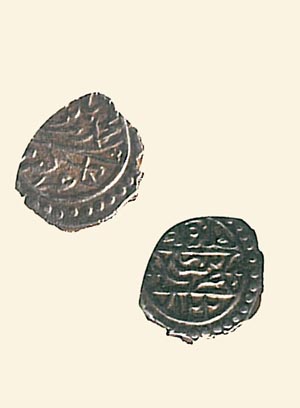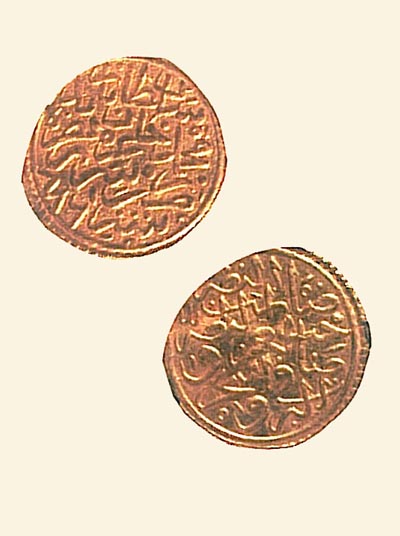"In the year 6892, in the month of September the Turks took over the miserable Serras"
The abbreviated account of the capture of Serres by Deli-Balaban and Lala-Sakhin, on 19 September 1383, apart from dating the event with exactitude, illustrates the emotional upheaval of the anonymous narrator. The Ottoman chronicles of this period lessen the feeling of misfortune that had stricken the city after his conquest as it makes clear that the city was surrended peacefully. This means that the conquerors were not going to grasp anything from the infidels (non muslims), not even "the tiniest piece of their waste", as long as "the Law of Grand Seignior" was appended to the, already existing, local legislative structures. For this early period the above mentioned Law was simple and retributive and most importantly offered taxation reductions.
From that time on, officers of the highest rank -vezirs, pashas and beys, ghazis, captains of the guard of the castle and chamberalains ladies of the harem, such as the Djandarli family, Evrenoz bey, Seyh Bedreddin, Ismail bey, Bahaeddin pasha, Mehmed bey and his wife Selcuk Hatun and Mustafa bey - offered back to the inhabitants of this land the divine gift of the large revenues which was offered to them by the Sultan, just because they erected dervish convents, mosques, hammams, khans and kervansarais, fountains and bridges, transforming in this way the image of the whole city into an islamic one. The economy of this "large and admirable city" rallied in line with the customary belief that "charity is the most effectual holy war".
This policy which was also fortified by colonization, prove to be a very successful one..
The grand vezir Kara - Halil Hayreddin Djandarli sealed the conquest of the city with the foundation of a "magnificent mosque", erected according to its dedicatory inscription in the year 1385, in the city's lower marketplace - where the modern central square lays.
 The Cami known as Eski (The Old Friday-Mosque, pl. 1, no 1) was demolished in 1937 in order to be constructed in its place a shopping center; nowadays is an office - stored building. A number of alterations and additions occurred to the mosque. It was restored, first of all after its destruction by fire in 1719 and second of all, it was renewed by the Sultan Mahmud II in 1836. All these interventions make its original drawing reconstruction a very difficult task.Nevertheless, it looked exactly like the Yesil Cami (Green Mosque) in Nicaea which was founded by Hayreddin pasha in 1378 . The Cami known as Eski (The Old Friday-Mosque, pl. 1, no 1) was demolished in 1937 in order to be constructed in its place a shopping center; nowadays is an office - stored building. A number of alterations and additions occurred to the mosque. It was restored, first of all after its destruction by fire in 1719 and second of all, it was renewed by the Sultan Mahmud II in 1836. All these interventions make its original drawing reconstruction a very difficult task.Nevertheless, it looked exactly like the Yesil Cami (Green Mosque) in Nicaea which was founded by Hayreddin pasha in 1378 .
 For the secure function of this foundation, the Sultan Murad I himself provides to the mosque the right to collecte 7200 akce from the city's taxation. The mosque's revenues were also increased by the rental of shops as well as from the profits of the use of the public bath which was build by the grand vezir eastwards of the mosque. The Eski Hammam was sunk under ground level of the contemporary city due to the remarkable elevation of the latter. Therefore, despite that a large section of the building has been destroyed, the remaining parts were incorporated in a series of shops at the corner of the streets Solomou and Papapavlou . The visitor to the Tsagkalidis shoe shop can touch the dome that once covered one hall of the men's section. However, the concept of the awe that the original size of the dome generated, lays in the imagination. For the secure function of this foundation, the Sultan Murad I himself provides to the mosque the right to collecte 7200 akce from the city's taxation. The mosque's revenues were also increased by the rental of shops as well as from the profits of the use of the public bath which was build by the grand vezir eastwards of the mosque. The Eski Hammam was sunk under ground level of the contemporary city due to the remarkable elevation of the latter. Therefore, despite that a large section of the building has been destroyed, the remaining parts were incorporated in a series of shops at the corner of the streets Solomou and Papapavlou . The visitor to the Tsagkalidis shoe shop can touch the dome that once covered one hall of the men's section. However, the concept of the awe that the original size of the dome generated, lays in the imagination.
 Another building, a karanansarai refered to as eski, was erected by Ali pasha the Eunuche, Hayreddin pasha's son. It stood on the west of the Eski Cami and was destroyed by fire in 1763.The fortune of the above mentioned buildings reflect the fate of the rest of the monuments either destroyed, incorporated in modern buildings, or sunk under contemporary streets. In its efforts to recover from the great fire of 1913 the city rejected his Oriental profile and was forced "to resemble . Frankfurt".A stroll however, around the monuments that escaped the ire of dire times helps the visitor to realize the dynamic state of this city that minted coins in gold and silver on behalf of the Sultan . Another building, a karanansarai refered to as eski, was erected by Ali pasha the Eunuche, Hayreddin pasha's son. It stood on the west of the Eski Cami and was destroyed by fire in 1763.The fortune of the above mentioned buildings reflect the fate of the rest of the monuments either destroyed, incorporated in modern buildings, or sunk under contemporary streets. In its efforts to recover from the great fire of 1913 the city rejected his Oriental profile and was forced "to resemble . Frankfurt".A stroll however, around the monuments that escaped the ire of dire times helps the visitor to realize the dynamic state of this city that minted coins in gold and silver on behalf of the Sultan .
|

